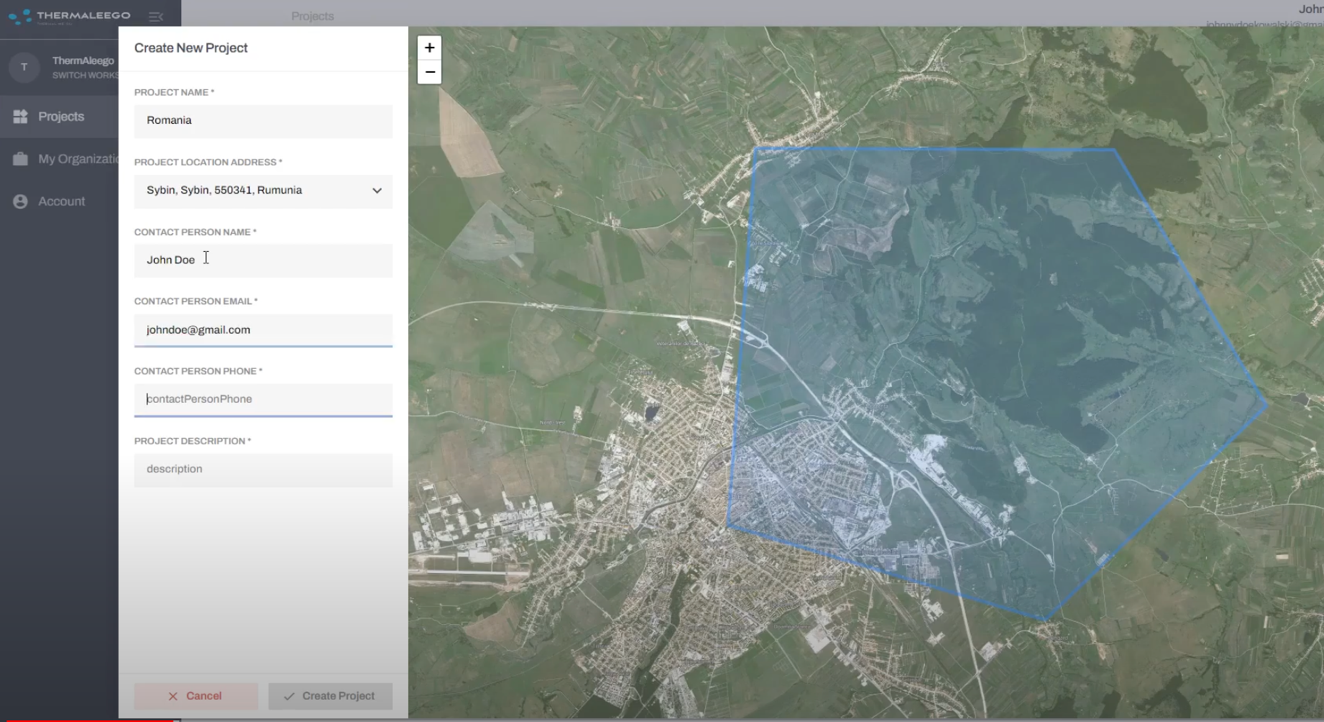
Objectives of the service

The service aims to address critical challenges faced by users in the energy sector. Users struggle with efficient inspection of assets like powerlines and pipelines due to limited software capabilities to process thermal data from various camera brands. Our solution, ThermAleego, leverages AI to process thermal data, enabling accurate defect detection and reporting. By uploading raw data to our cloud-based platform, users access automated data merging, precise defect detection, and customizable color scales. This streamlines asset inspection and condition assessment. Our objectives include enhancing inspection accuracy, predicting maintenance needs through AI analysis, and offering a cloud-based solution accessible to users without powerful hardware. The project aims to refine ThermAleego, validate its effectiveness through a pilot with energy companies, and develop a commercial roll-out strategy.
Users and their needs
The targeted user communities include energy companies and a drone services company in Europe. These users need efficient inspection tools to detect defects in powerlines and pipelines, aiding preventive maintenance. Their challenges lie in current software limitations, hindering accurate processing of thermal data and inability to predict future asset degradation. The project needs to develop a robust AI-powered solution that can process diverse thermal data, provide precise defect detection, and offer predictive maintenance insights. The users needs include:
-
Accurate defect detection in powerlines and pipelines
-
Cloud-based platform for efficient data processing and visualization
-
AI-based predictive maintenance insights
-
Compatibility with multiple thermal camera brands
Service/ system concept
The ThermAleego service offers energy companies and drone services providers an advanced thermal inspection solution. It processes thermal data collected by drones, accurately detecting defects in powerlines and pipelines. The service provides a cloud-based platform where users can upload thermal data, which is then processed by AI algorithms. The system automatically merges thermal images, sets color scales, and identifies defect points. Users receive detailed pre-reports with defect locations and geo-positioning data. The system architecture involves a user-friendly online platform hosting the AI-powered software. Users upload thermal data, and the system processes it to deliver accurate defect reports.

Space Added Value
ThermAleego leverages space assets through satellite-based positioning and communication. The service integrates GNSS (Global Navigation Satellite System) data to accurately geo-reference thermal data collected by drones during energy asset inspections. This integration ensures precise defect location identification and enhances overall accuracy. By utilizing space-based positioning, ThermAleego enables a higher level of precision in defect detection, making it a more reliable and efficient solution compared to traditional methods. This added value enhances the quality of defect reporting, increases the reliability of predictive maintenance, and provides a competitive edge over existing competitors that lack such space-based integration.
Current Status

ThermAleego project came to an end with great results and potential new customers and partnerships across Europe. The software has been successfully developed and integrated with the ALEEGO platform. The AI algorithms for defect detection have shown great results although we will pursue this work further as we need more data from different periods which will contribute to the software's accuracy. The final phase allowed us to improve the user interface. The project achieved its goals of providing an innovative cloud-based solution for energy sector asset inspection with integrated AI and space assets.




